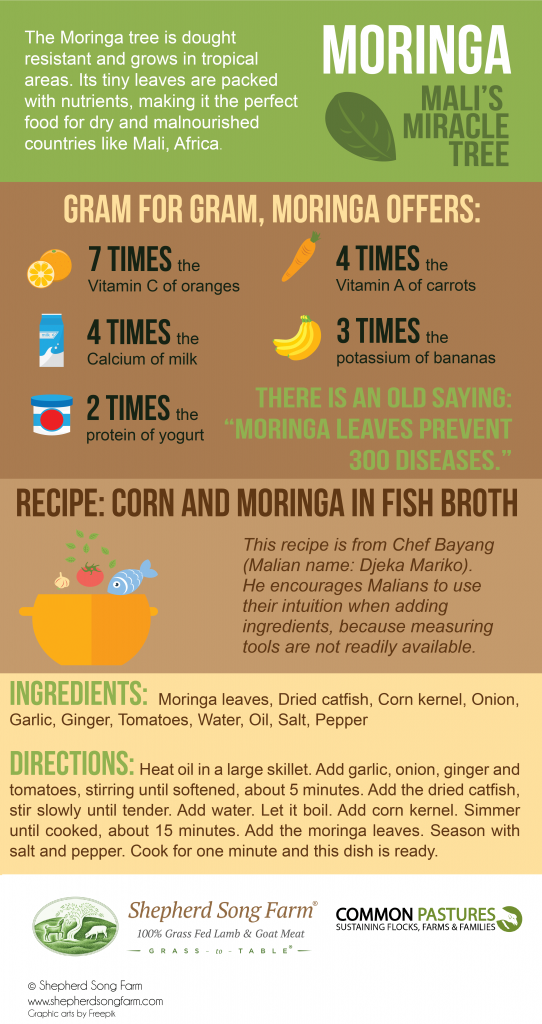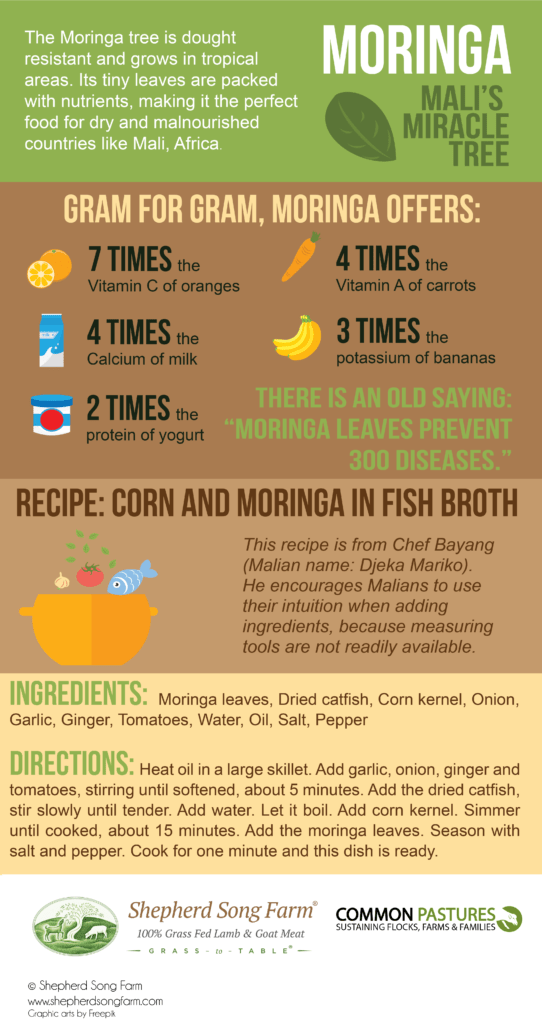
Moringa — Tree of Life (Infographic)
Dec. 9 | 2016
Moringa oleifera, known as the tree of life, is found in subtropical climates. It is full of vitamins and nutrients that are hard to source in rural, semi-desert areas.
Moringa is a tree with tiny leaves and long fruits. It offers many benefits to humans, animals and the environment. The drought-resistant tree grows easily from seeds or cuttings in marginal soil with very little water. It produces fruit pods and leaves within eight months. It is believed to have first grown in India, but the tree can also be found in tropical countries around the world.
Moringa leaves are packed with nutrients, including B vitamins, vitamin C, provitamin A as beta-carotene, vitamin K, manganese and protein. The leaves provide much needed nutrients and have been used in impoverished countries such as Mali to combat malnutrition. This is especially important for at-risk populations, including lactating mothers, children and the elderly.
Moringa leaves dried in shade retain the same health benefits as fresh leaves. This makes it a great alternative during the dry season.
The following recipe contains Moringa leaves, which are available in U.S. markets, African stores and ethnic markets. By sharing recipes like this, it is our hope we all enjoy foods that are nutritious, locally and seasonally available.


